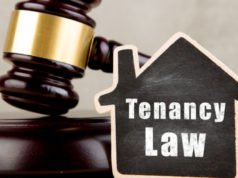Depending on the number of properties that a tax payer owns, the Income Tax Act stipulates various taxes that the assessee has to pay and also offers certain tax benefits
The income tax laws tax all your incomes under various heads. Any income with respect to a house property owned by you, is taxed under the head ‘income from house property’, whether the property is residential or a commercial one.
Basis for taxation of self-owned property
With respect to property owned by you and let out, the basis of taxation is higher of the rent actually received by you or the rent which the property could have fetched in the open market. This actual rent/market rent is known as ‘annual value’ in income tax parlance. In case any municipal taxes are paid by you, the same are reduced from the rent received or notional rent to arrive at the adjusted annual value.
However, in case the property or any part of it is used by for your business of profession, it will not be subject to the tax to the extent it is used for the purposes of business or profession. In case of such property which is not owned by you, the rental income with respect to such property is not taxed under this head but is taxed under the residual head ‘income from other sources’.
Presently, for one house property that is owned and occupied by you, the annual value is taken at nil and thus, is tax-free in your hands. However, in case you own and use more than one house for your own occupation, the law allows you to have only one house of your choice as self-occupied and the other house/s is/are treated as deemed to have been let out. This even applies to the house which is owned by you in your native place and is not let out, as well as the house which is owned by you and in which your parents are staying, for which no rent is received by you. Once a property is deemed to have been let out, you are required to offer the notional market rent for tax, even though you have not received any rent from such property. The Finance Bill 2019 introduced on February 1, 2019, proposes to increase the number of houses that can be treated as self-occupied by you, from one to two, in case the same are owned and used/reserved for self-use.
Deductions available while computing the taxable income from house property
Two deductions are available, while computing the taxable income from house property. The first deduction available is a standard deduction at the flat rate of 30 per cent of the annual value computed as above, to cover the cost of repairs, etc., irrespective of whether any expenditure has been incurred or not. Since the annual value of a self-occupied property is taken as nil, no standard deduction is available for repairs, etc., with respect to this property.
The second deduction pertains to interest under Section 24(b) of the Income Tax Act on any money borrowed to purchase or construct a house, or for repairs or reconstruction of your existing property. This benefit is available for both, residential and commercial properties. Under the income tax laws even the processing fee for home loan application or prepayment charges paid on an existing home loan, are treated as interest and thus, can also be claimed. The money can be borrowed from anybody, including your relatives or friends and not necessarily from banks.
Presently for one self-occupied property, the amount of deduction available is capped at Rs two lakhs per year. However, for a property that is let-out or any additional self-occupied property/ies that is/are treated as let-out, the entire interest on such a loan can be claimed. If you have more than one property as self-occupied, it is better to treat the property with lower or nil interest as self-occupied, in case the interest payable for any such properties exceeds Rs two lakhs. With the proposal to allow a tax payer to have two self-occupied properties in the budget 2019, the restriction on claim of interest under Section 24(b) shall continue to be Rs two lakhs, whether you have one self-occupied house or two self-occupied houses.
For an under-construction property, the interest can be claimed only from the year in which the construction is completed and possession is taken. In the year in which you obtained the possession, you can claim interest for the full year, even if the possession is taken on March 31, i.e., the last day of the year. With respect to the aggregate of interest paid prior to taking possession, the same can be claimed in five equal instalments, beginning from the year in which the construction is completed and possession is taken. The overall interest claim, including the current year’s interest, shall still be restricted to Rs two lakhs, for self-occupied property.
Irrespective of the number of properties owned by you and whether it is let out or self-occupied, the total of loss, if any, computed under the head ‘income from house property’, can only be set off against income under other heads only upto Rs two lakhs and any loss not so set off in the current year, can be carried forward. The loss so carried forward, can be set off against the income, if any, against the head ‘income from house property’ only for the next eight years and not beyond. The loss not so set off within eight years, shall lapse.
Source: Housing news










